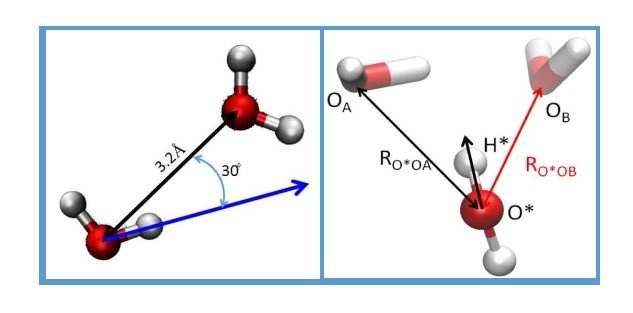The Structure and Dynamics of Confined Water
- Study the confined or restricted water
Self-organized amphiphilic assemblies (like micelles, reverse micelles, vesicles) provide a fascinating world of bio-mimicking systems. The dynamics of water in the surface of such systems closely relates that of the biological water. The nano confinement of water in reverse micelles provides a potential stage for investigation water in the crowded environment in live cells. In these systems the water structure and hydrogen bonding network can be tuned by modifying the composition of the system to simulate various local environment often encountered in biological systems. Our recent studies using ultrafast fluorescence spectroscopy has established the applicability of Arrhenius type of barrier crossing model in the vicinity of micellar and reverse micellar surfaces, which in turn could be extended to real biological environment. The water droplets of reverse micelles often serve as a template for nanoparticle synthesis and thus the study of the surface film curvature and the associated energy change is very important aspect to study for the size-shape control and optimized growth of the nanomaterials.
Theoretical study on the hydration structure of water around co-sloutes and various bio molecules
Attempts will also be made to develop simulation codes to understand some of the key features regarding on the molecular jump mechanism of water reorientation as well as rotational dynamics of water molecules in the vicinity of hydrophobic molecules. Our primary interest is focused on the understanding the hydrogen bond making and breaking dynamics with water-water network and water-cosolutes network using molecular dynamics (MD) simulation technique. Our major goal would be to establish the trajectory of the orientational correlation functions of the molecule at various time. The concentration dependent reorientation times of water around hydrophobic molecules are calculated from the all atom classical molecular dynamics (MD) simulations. The re-orientational times which are determined by the rotational diffusion constant would also be examined and compeared. We are also probing the inherent structural and temporal heterogeneity in the system through the jump events. The MD simulation trajectories reveal presence of large amplitude angular jumps, which dominate the orientational relaxation. We rationalize the non-monotonous, concentration dependent orientational dynamics by identifying two different physical mechanisms which operate at high and low water concentration regimes. The results obtained from simulated studies will be correlated with the experimental findings in order to extract in depth information of the biophysical processes involved.

